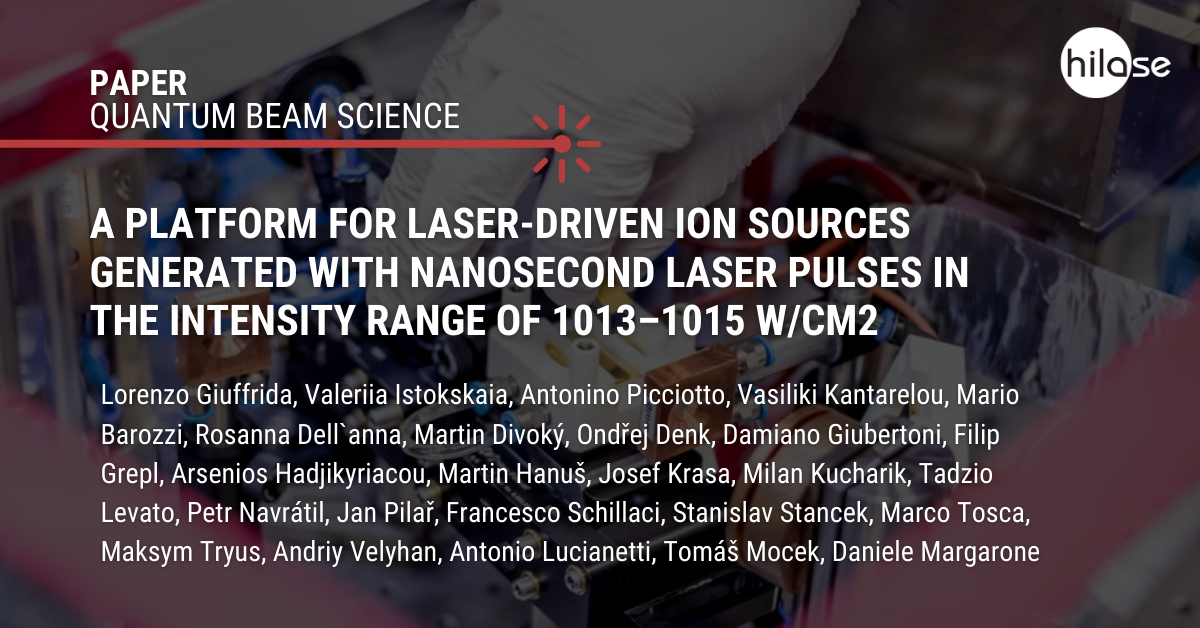HiLASIANS from the Advanced Laser Development department contributed to a new paper published in the Quantum Beam Science journal titled A Platform for Laser-Driven Ion Sources Generated with Nanosecond Laser Pulses in the Intensity Range of 1013–1015 W/cm2. Among the authors, you can find Martin Divoký, Ondřej Denk, Martin Hanuš, Petr Navrátil, Jan Pilař, Antonio Lucianetti and Tomáš Mocek.

They collaborated on this study with a wide team of researchers from ELI Beamlines Facility, CTU in Prague, Fondazione Bruno Kessler, Institute of Physics of the CAS, Palackého University, Faculty of Mathematics and Physics of the Charles University, and Queen’s University Belfast. Collaborations on national and international levels such as this one are key to the progress of HiLASE Centre research.
An experimental platform for laser-driven ion (sub-MeV) acceleration and potential applications was commissioned at the HiLASE laser facility. The auxiliary beam of the Bivoj laser system operating at a GW level peak power (~10 J in 5–10 ns) and 1–10 Hz repetition rate enabled a stable production of high-current ion beams of multiple species (Al, Ti, Fe, Si, Cu, and Sn). The produced laser–plasma ion sources were fully characterized against the laser intensity on the target (1013–1015 W/cm2) by varying the laser energy, focal spot size, and pulse duration. The versatility and tuneability of such high-repetition-rate laser–plasma ion sources are of potential interest for user applications. Such a statistically accurate study was facilitated by the large amount of data acquired at the high repetition rate (1–10 Hz) provided by the Bivoj laser system.
The described results represent a statistically robust experimental study enabled by the high repetition rate capability of the experimental chain (laser system, target refreshing device, ion diagnostics, data acquisition, and real-time data analysis), which allowed us to average laser–plasma shot-to-shot fluctuations out and, thus, investigate the experimental scaling laws and, consequently, tune the ion source parameters based on user requirements for future applications.








